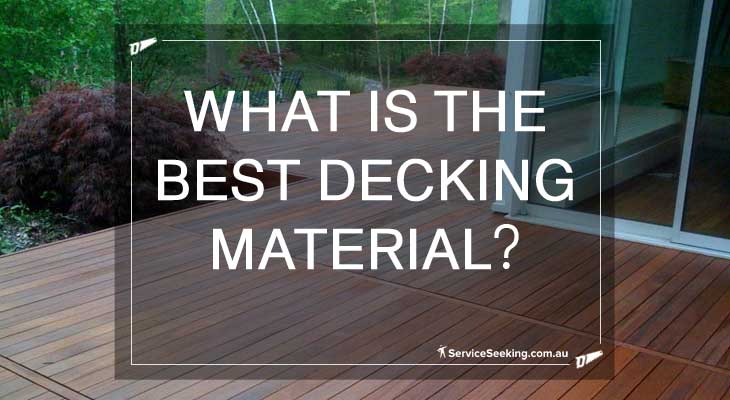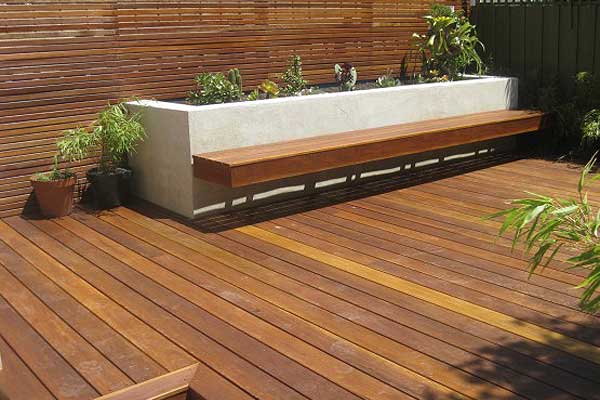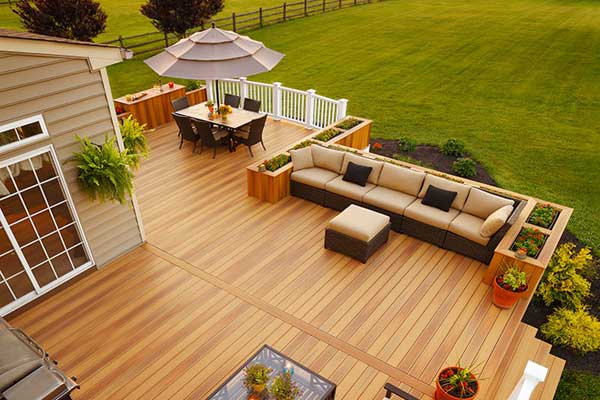What is the Best Decking Material?
Find out how composite decking compares to traditional hardwood and the treated pine decking. Learn about the maintenance and the value-for-money. Read up.

Depending on your expectations and your budget, you can choose from several different decking options. Here are some of the decking materials that people in Australia use for their projects:
- Hardwood
- Treated pine
- Composite decking
Besides these, people use aluminium, entirely PVC decking, bamboo and other decking materials for their projects. All these materials have their upsides and downsides. Before choosing them, you need to ask yourself a couple of questions:
- What is your budget for your decking project?
- How much maintenance do you find acceptable?
- Do you care about the environmental issues?
- Do you plan on building the decking yourself?
If you plan on turning this decking into your DIY project, go for some of the Bunnings deckings that are mostly premade and go from there. Still, this is not a project for entirely inexperienced deckers since decking needs to be secured and well-built to avoid dangerous situations.
What you will save in professional decking builder’s fees, you will spend in fixing the decking that hasn’t been installed properly. Additionally, these fees don’t have to be over the top. See for yourself. Ask for decking installation quotes from professional decking installers and make your decision.
What is the Best Wood for Decking in Australia?
If your questions actually mean what is the hardest and the most durable hardwood decking timber in Australia, the answer is ironbark. But does that make it the best option? It depends. While being the hardest and the most durable, it is also among the priciest options.
Also, you may like the grain or the colour of some different hardwood. That is why it is difficult to pick one hardwood and call it a day. Here are some of the most commonly used hardwoods for decking projects:
Spotted gum – This hardwood mainly comes from sustainable plantations which makes it a green option. Its colour usually goes from pale to deep chocolate brown. It is extremely dense and doesn’t shrink, which means your decking will be secure and solid. It is resistant to bushfires, termites and insects.

Image source: Timber & Building Supplies
Blackbutt – Density, strength and nice range of brown colour that ranges from yellowish to light brown are the advantages of blackbutt decking timber. It is also a sustainable option, which is important if you want to have environmentally friendly decking.
Jarrah – While still very strong and durable, Jarrah is not as dense as spotted gum or blackbutt. However, it is still strong enough to make solid decking. One of its upsides is the lovely red colour that makes it quite distinctive. Jarrah can be expensive since it grows slowly, so it is sometimes scarce.
Merbau – This decking timber does not share the durability and strength of other timbers from this range of decking material. It is somewhat less strong and the main downside is that it is full of tannins and oils. This means that it ‘bleeds’ a lot and leaves stains on the surrounding materials. However, the range of its lovely red colours is hardly matched by other timbers.
Ironbark – The name of this amazing decking timber says a lot. This is among the hardest and the most durable decking materials out there. Also, when weathered, it can have a lovely grey colour that makes it resemble real steel. That is another reason for its name.
Stringybark – Be very careful when opting for this type of decking timber, as there are three kinds of stringybark, and only two of them are suitable for decking. You are most likely to choose yellow stringy bark for your decking timber. White is a durable softwood and red is too rare to find.
Traditionally, Australian households build their decking out of hardwood. However, while it has its good sides, there are other options that also have the durability of this strong timber but also better prices and lower maintenance requirements.
Hardwood decays over time, and it needs constant treatment. It can be heavy and difficult to work with, and it can have high prices. Not to mention the environmental concerns. Therefore, let’s look into other options.
How Long Will Treated Pine Decking Last?
The closest to the hardwood that is not hardwood is the treated pine. Treated pine decking is made out of pine that has been covered in preservatives of different properties. Such treated pine decking can last even 30 years.
Benefits of the treated pine include durability, a wide range of finishing choices, good price for the quality offered, and sustainability of the sources.
Treated pine that has the hazard levels treatment H3 or H4 is used for decking projects. This means that it is suitable for in-ground use (H4 only) and resistant to termites, borers and wetting. It also isn’t as heavy as the hardwood and doesn’t require constant coating.
Since pine, like other softwoods, grows very quickly, it is sustainable, and deforestation is not an issue for this decking timber. It is a good choice for those who want the appearance of natural wood with the durability and the price of a less ambitious material.
What is Composite Decking?
This is the best option for those who love green options and don’t want to worry about maintenance. Composite decking is made out of recycled plastic and timber fibre. There are also adhesives that make these two materials stick together.
The benefits of using composite decking are numerous. You get a sustainable decking material that doesn’t add to the deforestation. Composite decking is as durable as hardwood, if not even more.
It doesn’t splinter, and it doesn’t stain easily. If there is a stain, it should be removed in a timely manner with common household cleaning products. Composite decking will not weather or decay. It will remain as it is for decades. You can simply hose it down from time to time.

Image source: Scoop
You won’t be missing out on the hardwood appearance either since composite decking can mimic the texture and the appearance of any timber you like. The only two downsides are the price and the weight. This type of decking is heavy, and it is more expensive than hardwood.
However, in the long run, it pays off since there is no maintenance that hardwood requires.
Get quotes for all three types of decking from the professional decking installers. In that way, you will easily decide which type of decking material matches your budget and your project.
There are lots of local decking installers who can provide you with top-notch services. Take a look at ServiceSeeking.com.au’s highest-rated decking specialists in these major cities:
Sydney | Melbourne | Brisbane | Perth | Adelaide | Hobart | Canberra | Darwin